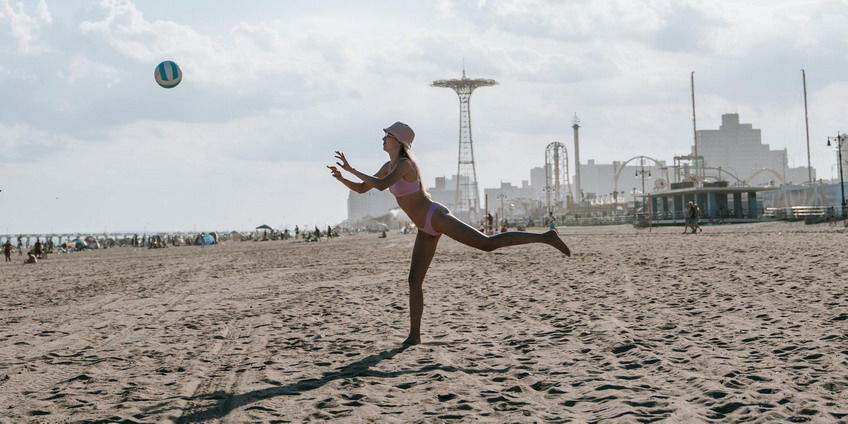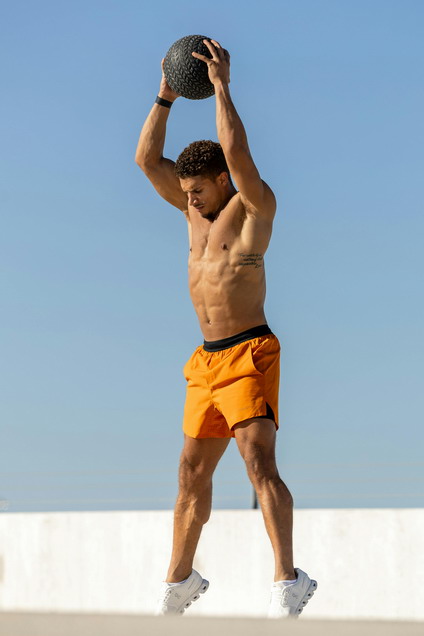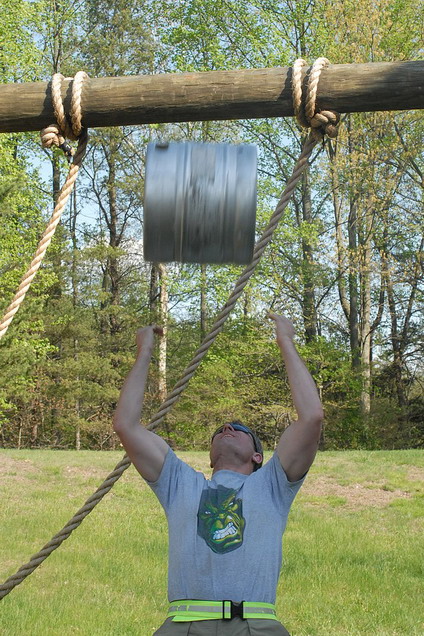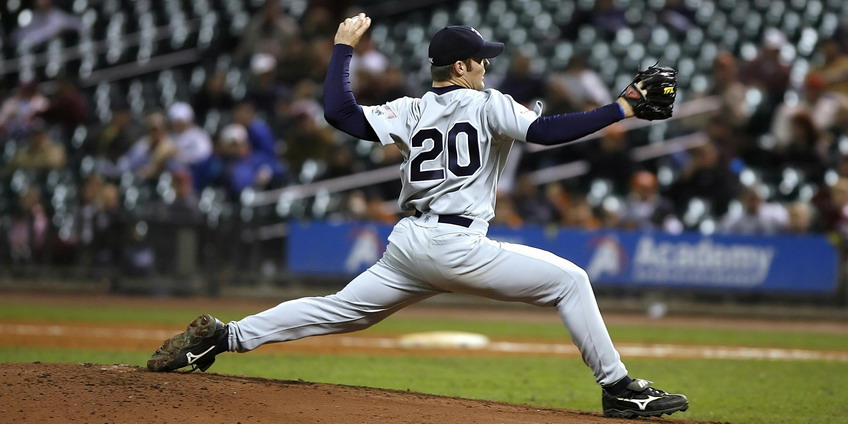038. Throwing

Launching objects into the air is another essential human ability.
Ancient men practiced throwing whenever they were hunting prey or fighting enemies. Different objects were used as projectiles, like stones, sticks, javelins and axes. To increase the throwing distance, they invented slings and bows, but such tools are not in scope of our interest. We will stay focused on launching objects solely with the muscle power.
Exercising throws is also known as ballistic training. While it may not be much beneficial on its own, ballistic training could be a nice additional or complementary training method for general power development. Throwing heavy objects leans towards strength dominant peak power. On the other side, throwing lighter objects falls into category of agility dominant peak power.
There are 2 distinct methods for manually launching objects through the air: throwing could be done with two hands or with one hand. Let’s elaborate differences between these methods.


Two-Handed Throwing
Appropriate for larger and heavier objects, like medicine balls, sandbags, kegs, stones, wooden logs, etc. Here is the list of two-handed throws you can implement in your ballistic training program:
- Overhead Downward Slam (alternatively overhead throw for distance)
- Underhand Upward Toss (alternatively underhand toss for distance)
- Chest Pass (practiced in basketball)
First two throws represent very powerful whole body movements. On the other side, chest pass is quite weak in comparison and uses only arm power instead of the whole body. This means you can skip it and practice only slam and toss and resort to chest pass for variety and fighting boredom.

One-Handed Throwing
These throws are technically more demanding, but also more precise, if that is of your concern. They are practical mostly for quick throws of smaller and lighter objects, like pebbles. Here is the list of one-handed throws you can implement in your training program:
- Pitch (practiced in baseball, cricket, water polo, javelin throw)
- Forehand Rotational Throw (like throwing a discus)
- Backhand Rotational Throw (like throwing a frisbee)
- Shot-Put (ideal for heavy objects; Olympic version requires body rotation)
Be careful if you haven’t practiced single arm throws lately. Tendons and ligaments of the shoulder and elbow area are particularly sensitive and vulnerable. If you have experienced any shoulder and elbow issues in the past, it would the best to avoid single arm throws all together. For building explosive whole body power, rather stick to two-handed throws.
Throwing for Power
You will often see athletes lightly throwing medicine ball at the wall, waiting for it to rebound, then catch it and do another repetition. While this may be a good exercise for coordination, it is not beneficial for power development at all. For power, you have to throw objects with all your might. Therefore, regardless of which throws you included in you ballistic training, always put your maximal effort in. If you want to measure the exerted power, throw for distance, then measure it and monitor progress.
Safety
As you can guess, throwing objects could be dangerous. Soft medicine balls or sandbags are relatively safe and can be used indoors, while hard objects may be used only outside. Wherever you are practicing ballistic training, always be sure there are no people around when you start throwing. Considering injury possibilities, two hand throws are significantly safer then single hand throws, although the throwing weight is usually heavier. This is certainly something to think about when planning a ballistic training program.
Add comment
Fill out the form below to add your own comments